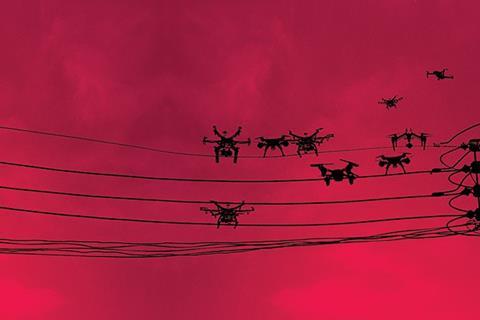Put it this way: would you rather inspect the slipform of a tall tower by dangling off the 45th storey or by sending up a drone to do the job? Tim Clark reports on the commercial use of drone technology in construction and asks whether it presents a threat to professions such as surveyors or a safety net of new business opportunities

Hyped as the Back-to-the-Future-style technology that can fly a pizza to your door or an ice cream to your sun-lounger, drones have been widely touted as the answer to consumers’ wildest delivery dreams. While the likes of Amazon hog the headlines, the technology is also delivering a revolution in construction, with clients such as the Environment Agency, Network Rail and HS2 beginning to take the use of unmanned aerial vehicles (UAV) seriously for large-scale surveying.
A report in 2016 by PwC into commercial drone use placed the value of labour or services that could be replaced by a global market of drone service applications at over Β£100bn by 2025, with Β£36.6bn of that in infrastructure alone. At present the technology, while representing a step change in certain capabilities, is mainly used in construction for large site surveys that are followed up at a later date with more accurate, traditional techniques.
However, as with many of the automated technologies that affect people’s working lives, the fear is that the disruption it brings can threaten to leave entire professions obsolete. While in the past technological changes mostly affected blue-collar workers, now the media is full of dire predictions tha
















